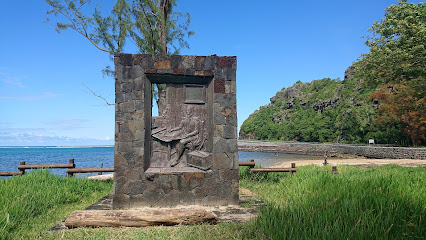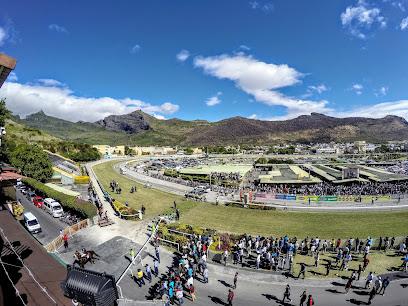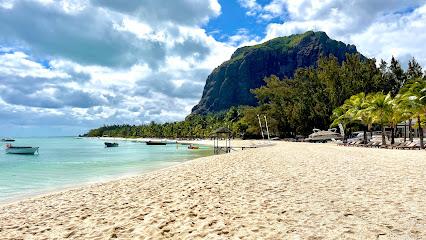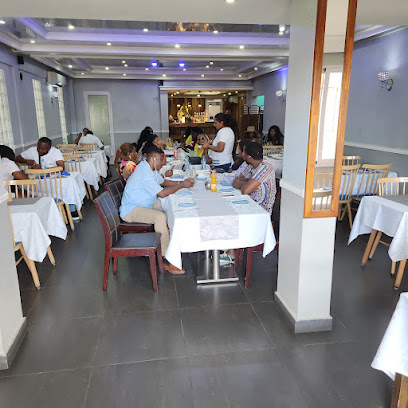
Pamplemousses: The Garden Jewel of Mauritius
Discover Pamplemousses in Mauritius, a serene village known for its historic botanical garden, rich colonial history, and proximity to stunning northern attractions.
Nestled in the northern part of Mauritius, Pamplemousses is a hidden gem that exudes charm and tranquility. Known for its lush greenery, this picturesque village is home to the famous Sir Seewoosagur Ramgoolam Botanical Garden, often simply referred to as the Pamplemousses Garden. This botanical paradise is one of the oldest in the Southern Hemisphere, boasting an impressive collection of exotic plants, giant water lilies, and centuries-old trees. Wandering through these serene pathways feels like stepping into a living museum of nature. Beyond the botanical garden, Pamplemousses offers a glimpse into the rich history and culture of Mauritius. The village itself is a blend of colonial architecture and local charm, with quaint streets lined with vibrant markets and friendly locals. The nearby Sugar Museum and Factory is a must-visit, providing an insightful journey through the island's sugar industry and its historical significance. Here, you can learn about the process of sugar production and even sample some delicious local rum. Pamplemousses also serves as a gateway to other attractions in the north of Mauritius. From here, it's a short drive to the bustling town of Grand Baie, known for its stunning beaches and lively nightlife. Whether you're a nature enthusiast, a history buff, or simply looking to unwind, Pamplemousses offers a unique and enriching experience that captures the essence of Mauritius.
Local tips in Pamplemousses
- Visit the Sir Seewoosagur Ramgoolam Botanical Garden early in the morning to avoid crowds and enjoy the peaceful atmosphere.
- Wear comfortable walking shoes as the botanical garden is expansive and you'll want to explore every corner.
- Don't miss the opportunity to try local Mauritian snacks at the village markets.
- Combine your visit with a trip to the nearby Sugar Museum and Factory for a comprehensive cultural experience.
- Consider renting a car to easily explore the surrounding northern attractions such as Grand Baie and its beautiful beaches.
Pamplemousses: The Garden Jewel of Mauritius
Nestled in the northern part of Mauritius, Pamplemousses is a hidden gem that exudes charm and tranquility. Known for its lush greenery, this picturesque village is home to the famous Sir Seewoosagur Ramgoolam Botanical Garden, often simply referred to as the Pamplemousses Garden. This botanical paradise is one of the oldest in the Southern Hemisphere, boasting an impressive collection of exotic plants, giant water lilies, and centuries-old trees. Wandering through these serene pathways feels like stepping into a living museum of nature. Beyond the botanical garden, Pamplemousses offers a glimpse into the rich history and culture of Mauritius. The village itself is a blend of colonial architecture and local charm, with quaint streets lined with vibrant markets and friendly locals. The nearby Sugar Museum and Factory is a must-visit, providing an insightful journey through the island's sugar industry and its historical significance. Here, you can learn about the process of sugar production and even sample some delicious local rum. Pamplemousses also serves as a gateway to other attractions in the north of Mauritius. From here, it's a short drive to the bustling town of Grand Baie, known for its stunning beaches and lively nightlife. Whether you're a nature enthusiast, a history buff, or simply looking to unwind, Pamplemousses offers a unique and enriching experience that captures the essence of Mauritius.
When is the best time to go to Pamplemousses?
Iconic landmarks you can’t miss
Sir Seewoosagur Ramgoolam Botanical Garden
Discover the Sir Seewoosagur Ramgoolam Botanical Garden, a breathtaking tropical paradise showcasing diverse flora and serene landscapes in Mauritius.

Chamarel Seven Colored Earth Geopark
Discover the stunning natural wonder of Chamarel Seven Colored Earth Geopark, where vibrant dunes and breathtaking landscapes await you in Mauritius.

Notre-Dame Auxiliatrice de Cap Malheureux
Experience the tranquil beauty and spiritual significance of Notre-Dame Auxiliatrice, a must-see landmark in Cap Malheureux, Mauritius.

L'Aventure du Sucre
Explore the sweet legacy of Mauritius at L'Aventure du Sucre, where history, culture, and sugar unite in an unforgettable museum experience.

Citadelle (Fort Adelaide)
Explore the historic Citadelle in Port Louis, Mauritius – a stunning fortress offering breathtaking views and a glimpse into the island's colonial past.

Curious Chamarel
Explore the breathtaking landscapes and vibrant culture at Curious Chamarel, a must-visit tourist attraction in Mauritius showcasing natural wonders.

L'Ocean
Discover the flavors of the sea at L'Ocean, a seafood restaurant in Pamplemousses known for its fresh dishes and stunning ocean views.

Château de Labourdonnais
Explore the enchanting Château de Labourdonnais, where history, culture, and nature intertwine in the heart of Mauritius.

Captain Matthew Flinders Monument
Explore the Captain Matthew Flinders Monument, a historical landmark celebrating maritime heritage and the spirit of exploration amidst beautiful surroundings.

Jummah Masjid
Explore the architectural beauty and cultural heritage of Jummah Masjid, a serene mosque in Port Louis, Mauritius.

Les Jardins De La Compagnie
Discover the serene beauty of Les Jardins De La Compagnie, a botanical gem in Port Louis, showcasing the rich flora of Mauritius in a tranquil setting.

Aapravasi Ghat World Heritage Site
Explore the Aapravasi Ghat World Heritage Site in Port Louis, a key cultural landmark showcasing the rich history of indentured labor in Mauritius.

Monument Commemorating Abolition Of Slavery
Explore the Monument Commemorating Abolition of Slavery in Mahebourg, a poignant tribute to freedom and historical resilience amidst stunning coastal views.

St Louis Cathedral
Discover the spiritual beauty and historical significance of St. Louis Cathedral, a must-see landmark in Port Louis, Mauritius.

Le Fangourin
Experience the flavors of Mauritius at Le Fangourin, a charming restaurant nestled in the historic Sugar Factory of Pamplemousses.

Unmissable attractions to see
Sir Seewoosagur Ramgoolam Botanical Garden
Discover the enchanting Sir Seewoosagur Ramgoolam Botanical Garden in Mauritius, a tropical paradise filled with exotic flora and rich history.

Chamarel Seven Colored Earth Geopark
Explore the vibrant hues of Chamarel Seven Colored Earth Geopark, a stunning natural wonder showcasing the beauty of Mauritius' landscape.

La Vallée Des Couleurs Nature Park
Discover the vibrant beauty and thrilling adventures at La Vallée Des Couleurs Nature Park in Chamouny, Mauritius, a must-visit for nature lovers and thrill-seekers alike.

Casela Nature Parks | Best Nature Parks in Mauritius
Explore Casela Nature Parks in Mauritius, where adventure meets nature with thrilling activities, exotic animals, and stunning landscapes.

Central Market
Explore the vibrant Central Market in Port Louis, where local flavors, crafts, and culture come alive in a bustling atmosphere.

Chamarel Waterfall
Experience the natural wonder of Chamarel Waterfall, a breathtaking cascade surrounded by lush greenery, perfect for nature lovers and adventure seekers.

Flic En Flac Beach
Flic En Flac Beach: A tropical paradise in Mauritius with golden sands, vibrant marine life, and unforgettable sunsets.

Notre-Dame Auxiliatrice de Cap Malheureux
Discover the breathtaking beauty and spiritual significance of Notre-Dame Auxiliatrice de Cap Malheureux, a must-visit destination in Mauritius.

L'Aventure du Sucre
Discover Mauritius' rich sugar heritage at L'Aventure du Sucre, where history, culture, and sweet flavors unite in a captivating museum experience.

Black River Gorges National Park
Discover the natural wonder of Black River Gorges National Park, Mauritius' premier destination for breathtaking landscapes and rich biodiversity.

Mon Choisy Public Beach
Discover the breathtaking beauty and vibrant atmosphere of Mon Choisy Public Beach, a tropical paradise in Mauritius perfect for relaxation and adventure.

Champ de Mars
Experience the thrill of horse racing in Port Louis at Champ de Mars, the oldest racecourse in the Southern Hemisphere.

Pereybere Public Beach
Discover the beauty of Grand Baie, a tropical paradise in Mauritius with stunning beaches, vibrant local culture, and endless adventure.

Curious Chamarel
Experience the breathtaking beauty and vibrant culture of Curious Chamarel, a must-visit tourist attraction in Baie du Cap, Mauritius.

Le Morne Public Beach
Discover the tranquil beauty of Le Morne Public Beach in Mauritius, a perfect blend of relaxation, adventure, and stunning natural scenery.

Essential places to dine
L'Ocean
Experience culinary excellence at L'Ocean, where fresh seafood meets Mauritian charm in Pamplemousses.

Le Fangourin
Discover authentic Mauritian cuisine at Le Fangourin within Pamplemousses' historic Sugar Factory, where culinary delight meets rich heritage.

Chez Tante Athalie - Table d'hôte
Experience authentic Mauritian cuisine at Chez Tante Athalie - a culinary gem in Pamplemousses offering traditional flavors in a cozy setting.

Camaron Rouge
Discover the authentic taste of Mauritius at Camaron Rouge - a seafood paradise in Pamplemousses offering exquisite local dishes.

Selven Snack
Discover authentic Mauritian flavors at Selven Snack in Pamplemousses—your gateway to local culinary delights amidst breathtaking surroundings.

Aromas Of India
Discover the vibrant flavors and authentic cuisine at Aromas of India in Pamplemousses - A true taste of Indian culture.

Zananas Restaurant
Discover authentic Mauritian cuisine at Zananas Restaurant in Pamplemousses – where every meal is a celebration of local flavors.

JJ'S PIZZERIA
Experience the taste of Italy at JJ's Pizzeria in Pamplemousses—where fresh ingredients meet authentic recipes for unforgettable flavors.

Restaurant La Poule d'or
Experience authentic Asian cuisine at La Poule d'or in Pamplemousses - where every dish tells a story.

Botanic Resto
Experience authentic Mauritian cuisine at Botanic Resto amidst breathtaking botanical gardens in Pamplemousses.

La Cantine de Beau Plan
Experience authentic Mauritian cuisine at La Cantine de Beau Plan inside the historic Sugar Factory in Pamplemousses.

Pappagallo ( Mauritius )
Experience delicious pizza at Pappagallo, where Italian flavors meet Mauritian charm in the heart of Beau Plan.

Dodo's Den
Experience authentic Mauritian cuisine at Dodo's Den in Pamplemousses - where flavors meet tradition.

KFC Mahogany Shopping Promenade
Experience the iconic taste of KFC at Mahogany Shopping Promenade - perfect for shoppers craving delicious fried chicken.

Restaurant le Plaisir de Poivre
Experience authentic Mauritian flavors at Restaurant le Plaisir de Poivre in Pamplemousses, where tradition meets culinary excellence.

Markets, malls and hidden boutiques
Mahogany Shopping Promenade
Explore the lively Mahogany Shopping Promenade in Mauritius, where shopping meets dining amidst stunning lake views and vibrant entertainment.

Halkhoree Fashion Centre
Discover the vibrant fashion landscape of Mauritius at Halkhoree Fashion Centre, where style meets local culture in Pamplemousses.

Pamplemousses Market
Discover the heart of Mauritius at Pamplemousses Market, where fresh produce meets vibrant local culture in a colorful shopping experience.

Popular Store Ltd
Explore the local flavors and vibrant culture at Popular Store Ltd in Pamplemousses, your go-to grocery destination in Mauritius.

Angel Bookshop
Explore Angel Bookshop in Pamplemousses for a unique literary experience, where local culture and captivating stories await every visitor.

Quincaillerie Kawshadlah
Discover a world of tools and home improvement treasures at Quincaillerie Kawshadlah in Pamplemousses, an essential stop for every DIY enthusiast.

Empire Bookshop
Discover a literary oasis at Empire Bookshop in Pamplemousses, where book lovers find their next great read amidst a cozy, welcoming atmosphere.

Bijouterie Kumar & Fils
Discover exquisite handcrafted jewelry at Bijouterie Kumar & Fils in Pamplemousses, Mauritius, where local artistry meets timeless elegance.

Mamade store
Discover the local flavors and vibrant atmosphere at Mamade Store, your go-to grocery spot in Pamplemousses, Mauritius.

Vintage Clothing
Discover the charm of unique fashion at Vintage Clothing in Pamplemousses, where every piece tells a story of Mauritian culture and creativity.

Booklovers
Explore a world of literature and creativity at Booklovers, the ultimate stationery and bookshop in Pamplemousses, Mauritius.

Juste Tout Pamplemousses
Explore an array of affordable and unique home goods at Juste Tout Pamplemousses, a delightful shopping destination in Mauritius.

Bijouterie Nationale( Juwaheer & Sons)
Discover exquisite handcrafted jewelry at Bijouterie Nationale in Pamplemousses, where Mauritian artistry meets timeless elegance.

ARTEN
Experience the charm of ARTEN in Pamplemousses, a home goods store showcasing unique Mauritian crafts and decor.

Tabagie Popular
Discover the authentic tastes of Mauritius at Tabagie Popular, a must-visit food store in Pamplemousses offering local delicacies and vibrant culinary experiences.

Essential bars & hidden hideouts
L'Ocean
Discover the vibrant flavors of Mauritius at L'Ocean, where fresh seafood meets breathtaking ocean views in Pamplemousses.

Le Fangourin
Experience the rich culinary heritage of Mauritius at Le Fangourin, nestled in the historic Sugar Factory of Pamplemousses.

Camaron Rouge
Experience authentic Mauritian cuisine at Camaron Rouge, a culinary gem in Pamplemousses offering fresh seafood and local flavors.

Aromas Of India
Experience the vibrant flavors of India at Aromas of India in Pamplemousses, where every dish tells a story of tradition and taste.

La Cantine de Beau Plan
Explore the rich culinary heritage of Mauritius at La Cantine de Beau Plan, located in the historic Sugar Factory of Pamplemousses.

Pappagallo ( Mauritius )
Discover the best pizza in Mauritius at Pappagallo, where every slice is a taste of paradise in the heart of Pamplemousses.

Dodo's Den
Discover the vibrant flavors of Mauritius at Dodo's Den, where tradition meets culinary innovation in a cozy dining setting.

Restaurant le Plaisir de Poivre
Discover the authentic flavors of Mauritius at Restaurant le Plaisir de Poivre, where local cuisine meets warm hospitality in a charming setting.

Santana Bar
Experience the vibrant atmosphere and affordable drinks at Santana Bar, the heart of Port Louis nightlife, where locals and tourists gather to unwind.

Piano Rouge Bar Lounge
Discover the lively ambiance of Piano Rouge Bar Lounge, where tropical cocktails and live music create unforgettable moments in Port Chambly.

Belle Source Snack & Bar
Discover the flavors of Mauritius at Belle Source Snack & Bar, a cozy spot in Pamplemousses, perfect for local cuisine and refreshing drinks.

Le Palmiste Resto/Pub
Discover the lively spirit of Triolet at Le Palmiste Resto/Pub, where refreshing drinks meet local culture in a vibrant atmosphere.

The Bar
Experience luxury and breathtaking ocean views at The Bar in Turtle Bay, the perfect spot for relaxation and indulgence in Mauritius.

Restaurant et bar chez cheers
Discover the flavors of Mauritius at Restaurant et Bar Chez Cheers in Pamplemousses, where local cuisine meets a welcoming atmosphere.

Halal bar
Discover a unique blend of local flavors and cultural experiences at the Halal Bar in Ilot, perfect for halal dining enthusiasts.

Local Phrases
-
- HelloBonjour
[Bon-zhoor] - GoodbyeAu revoir
[O re-vwar] - YesWi
[Wee] - NoNon
[Non] - Please/You're welcomeS'il vous plaît/De rien
[Seel voo pleh/Dee ree-an] - Thank youMerci
[Mehr-see] - Excuse me/SorryExcusez-moi/Désolé
[Ex-kew-zay mwa/Day-zo-lay] - How are you?Comment allez-vous?
[Koh-moh-tah-lay voo] - Fine. And you?Bien. Et toi?
[Byen. Ay twah] - Do you speak English?Parlez-vous anglais?
[Par-lay voo ahn-glay] - I don't understandJe ne comprends pas
[Zhuh nuh kohm-prahnd pah]
- HelloBonjour
-
- I'd like to see the menu, pleaseMo voudré get menu, silvouple
[Moh voo-dray zheh meh-noo, seel-voo-pluh] - I don't eat meatMo pas mange la viande
[Moh pah mahnj lah vee-ahnd] - Cheers!Santé!
[Sahn-tay] - I would like to pay, pleaseMo voudré payé, silvouple
[Moh voo-dray pa-yay, seel-voo-pluh]
- I'd like to see the menu, pleaseMo voudré get menu, silvouple
-
- Help!Aide!
[Ehd] - Go away!Alé alé!
[Ah-lay ah-lay] - Call the Police!Appel la Police!
[Ahp-pay la Poh-lees] - Call a doctor!Appel enn docteur!
[Ahp-pay enn dok-tuhr] - I'm lostMo perdi
[Moh pair-dee] - I'm illMo malad
[Moh mah-lahd]
- Help!Aide!
-
- I'd like to buy...Mo voudré acheté...
[Moh voo-dray a-shet-ay] - I'm just lookingMo juste regarde
[Moh zhoost ray-gard] - How much is it?Combien sa coute?
[Kohm-byen sah koot] - That's too expensiveSa trop cher
[Sah troh shehr] - Can you lower the price?Eske to kapab ba pri la ba?
[Es-kuh toh kah-pah baa pree lah bah]
- I'd like to buy...Mo voudré acheté...
-
- What time is it?Ki ler li ete?
[Key layr lee eh-tay] - It's one o'clockLi ena enn ler
[Lee en-ah enn layr] - Half past (10)Ler et demi (10)
[Layr ay deh-mee (dis)] - MorningMatin
[Ma-tahn] - AfternoonAprès-midi
[Ah-pray mee-dee] - EveningSoir
[Swah] - YesterdayHier
[Yehr] - TodayAjourd'hui
[Ah-zhoor-dwee] - TomorrowDemain
[Deh-mahn] - 1Un
[Uhn] - 2De
[Duh] - 3Trois
[Twa] - 4Quatre
[Kat] - 5Cinq
[Sank] - 6Six
[Sees] - 7Sept
[Set] - 8Huit
[Wheat] - 9Neuf
[Nuff] - 10Dix
[Dees]
- What time is it?Ki ler li ete?
-
- Where's a/the...?Kot enn/la...?
[Koh ay/lah] - What's the address?Ki so adresse?
[Key soh ah-dress] - Can you show me (on the map)?Eske to kapav montre mwa (sur le plan)?
[Es-kuh toh kah-pahv mohn-truh mwah (soor luh plahn)] - When's the next (bus)?Ler prochain (bis)?
[Layr proh-shahn (bees)] - A ticket (to ....)Enn ticket (vers ....)
[Enn tee-kay (vair)]
- Where's a/the...?Kot enn/la...?
History of Pamplemousses
-
Pamplemousses, one of the oldest districts in Mauritius, was established in the early 18th century during the French colonial period. The district’s name, which translates to 'grapefruit' in French, is a nod to the abundance of the fruit in the area at the time. The French influence is still evident in the architecture and layout of the town.
-
In the mid-18th century, the French horticulturist Pierre Poivre arrived in Pamplemousses. Poivre is best known for his contributions to the development of the Sir Seewoosagur Ramgoolam Botanical Garden, which he transformed into a lush haven of exotic and native plants. His work in the garden had a lasting impact on the botany of Mauritius and the broader Indian Ocean region.
-
Originally established in 1735, the Sir Seewoosagur Ramgoolam Botanical Garden is one of the most iconic landmarks of Pamplemousses. Over the centuries, it has grown into a sprawling 37-hectare garden that houses a diverse collection of tropical plants, including giant water lilies, spice plants, and rare palm trees. The garden is also home to a number of historical monuments and statues.
-
Pamplemousses boasts a rich architectural heritage that reflects its colonial past. Notable buildings include the St. Francois d'Assise Church, which was built in 1756 and stands as one of the oldest churches in Mauritius. The district also contains several well-preserved colonial houses and estates, which offer a glimpse into the lifestyle of the early European settlers.
-
In recent decades, Pamplemousses has evolved into a vibrant and culturally diverse district. The area is known for its bustling markets, where visitors can experience the local way of life and sample Mauritian cuisine. The district also hosts various cultural festivals and events that celebrate the rich traditions and heritage of its multi-ethnic community.
-
Pamplemousses is home to several museums and historical sites that provide insight into the region's past. The L’Aventure du Sucre, a former sugar factory turned museum, offers an interactive experience that chronicles the history of sugar production in Mauritius. The Château de Labourdonnais, a restored 19th-century mansion, provides a look into the island's colonial history and architecture.
Pamplemousses Essentials
-
Pamplemousses is located in the northwest part of Mauritius, approximately 12 kilometers from the capital city, Port Louis. The nearest international airport is Sir Seewoosagur Ramgoolam International Airport (MRU), situated about 60 kilometers away from Pamplemousses. From the airport, you can take a taxi, a private shuttle, or rent a car to reach Pamplemousses. Public buses also connect the airport to Port Louis, from where you can take another bus or a taxi to Pamplemousses.
-
Pamplemousses is a relatively small area, and many of its attractions are within walking distance. For longer distances within the region, taxis are readily available and can be hailed on the street or booked through your accommodation. Public buses are also a convenient and cost-effective way to get around, with services connecting to neighboring towns and Port Louis. Renting a car or a scooter can offer more flexibility, especially if you plan to explore the surrounding areas at your own pace.
-
The official currency in Mauritius is the Mauritian Rupee (MUR). Credit cards are widely accepted in hotels, restaurants, and major shops, although it is advisable to carry some cash for smaller establishments and local markets. ATMs are available in Pamplemousses and surrounding areas, but it's wise to withdraw sufficient cash when you have the opportunity. Currency exchange services are also available at the airport, banks, and some hotels.
-
Pamplemousses is generally a safe destination for tourists. However, like any other travel destination, it is important to take standard precautions. Avoid displaying valuable items openly and be cautious of your surroundings, particularly in crowded places. Certain areas, such as Port Louis, may have higher crime rates, including petty theft targeting tourists. Always secure your belongings and avoid walking alone at night in unfamiliar areas.
-
In case of emergency, dial 999 for immediate assistance. The nearest hospital with emergency services is located in Port Louis. It is recommended to have travel insurance that covers medical emergencies. For minor health issues, pharmacies in Pamplemousses can provide over-the-counter medications. Keep a list of emergency contacts, including the local police station and your embassy or consulate.
-
Fashion: Do dress modestly, especially when visiting religious sites. Avoid wearing overly revealing clothing. Religion: Do respect local customs and traditions. Remove your shoes when entering temples and cover your head if required. Public Transport: Do be respectful and considerate of other passengers. Don't eat or drink on public transport. Greetings: Do greet people with a friendly handshake or a smile. Use 'Bonjour' (Good morning) or 'Bonsoir' (Good evening) as a polite greeting. Eating & Drinking: Do try local dishes and accept food offerings graciously. Don’t refuse hospitality, as it is considered impolite.
-
To experience Pamplemousses like a local, visit the local markets where you can buy fresh produce and traditional Mauritian goods. Engage with locals, as they are often friendly and willing to share stories about the area's history and culture. Don't miss the opportunity to visit the Sir Seewoosagur Ramgoolam Botanical Garden, one of the oldest botanical gardens in the Southern Hemisphere. For a unique experience, explore the Pamplemousses village and its historical sites, such as the L'Aventure du Sucre museum, which offers insights into the island's sugar industry.
Trending Landmark in Pamplemousses
-
Sir Seewoosagur Ramgoolam Botanical Garden
-
Chamarel Seven Colored Earth Geopark
-
Notre-Dame Auxiliatrice de Cap Malheureux
-
L'Aventure du Sucre
-
Citadelle (Fort Adelaide)
-
Curious Chamarel
-
L'Ocean
-
Château de Labourdonnais
-
Captain Matthew Flinders Monument
-
Jummah Masjid
-
Les Jardins De La Compagnie
-
Aapravasi Ghat World Heritage Site
-
Monument Commemorating Abolition Of Slavery
-
St Louis Cathedral
-
Le Fangourin
Nearby Cities to Pamplemousses
-
Things To Do in Pointe aux Piments
-
Things To Do in Port Louis
-
Things To Do in Trou aux Biches
-
Things To Do in Grand Baie
-
Things To Do in Riviere du Rempart
-
Things To Do in Grand Gaube
-
Things To Do in Poste de Flacq
-
Things To Do in Belle Mare
-
Things To Do in Flic en Flac
-
Things To Do in Tamarin
-
Things To Do in Mahebourg
-
Things To Do in Blue Bay
-
Things To Do in Chamarel
-
Things To Do in Le Morne
-
Things To Do in Bel Ombre







